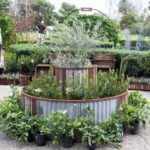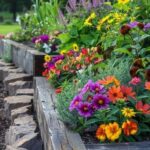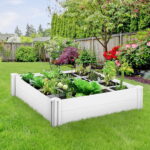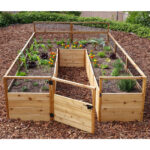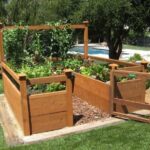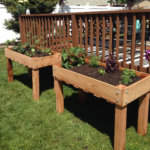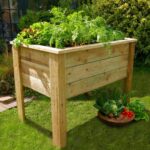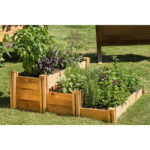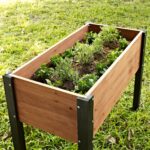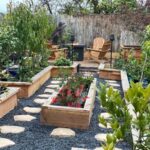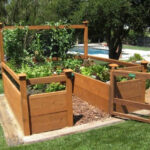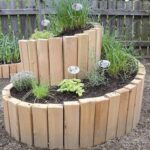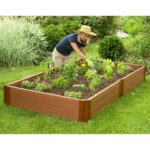Raised garden beds are an excellent solution for gardeners looking to optimize their growing space, improve soil quality, and reduce maintenance efforts. Whether you’re a seasoned gardener or a beginner, designing a raised garden bed involves several key considerations to ensure you create a productive and aesthetically pleasing garden. This guide will cover the essentials of raised garden bed design, including materials, placement, size, soil, and maintenance tips.
1. Benefits of Raised Garden Beds
Raised garden beds offer numerous advantages:
- Improved Soil Quality: Allows you to control the soil composition, ensuring it’s rich in nutrients and well-draining.
- Better Drainage: Prevents waterlogging and root rot by facilitating better drainage.
- Ease of Access: Reduces the need to bend or kneel, making gardening more accessible.
- Extended Growing Season: The soil warms up faster in the spring, allowing for earlier planting.
- Weed and Pest Control: Minimizes weed growth and helps protect plants from certain pests.

2. Choosing the Right Materials
Selecting the appropriate materials for your raised garden bed is crucial for its longevity and functionality. Common materials include:
- Wood: Cedar and redwood are popular choices due to their natural resistance to rot and insects. Avoid using pressure-treated wood, as it may contain harmful chemicals.
- Metal: Galvanized steel or corrugated metal is durable and adds a modern look to your garden.
- Stone or Brick: Offers a more permanent and aesthetically pleasing solution but can be more expensive and labor-intensive to install.
- Composite: Made from recycled materials, composite boards are durable and rot-resistant.
3. Determining the Ideal Location
Placement is critical for the success of your raised garden bed. Consider the following factors:
- Sunlight: Most vegetables and flowers require at least 6-8 hours of direct sunlight per day. Choose a sunny spot for optimal growth.
- Accessibility: Ensure the bed is easily accessible for watering, weeding, and harvesting.
- Drainage: Avoid low-lying areas where water may accumulate. Ensure the site has good drainage.
4. Designing the Perfect Size
The size of your raised garden bed should be tailored to your needs and space constraints:
- Width: A width of 3-4 feet allows for easy access from both sides without stepping into the bed, which can compact the soil.
- Length: The length can vary depending on your space, but 6-8 feet is a common choice. Avoid making it too long to prevent difficulty in reaching the middle.
- Height: A height of 12-18 inches is sufficient for most vegetables. For deeper-rooted plants, consider a height of 24 inches or more. Higher beds also reduce bending and are more accessible.
5. Preparing the Soil
The quality of the soil in your raised garden bed is crucial for plant health. Follow these steps for optimal soil preparation:
- Base Layer: Start with a layer of cardboard or newspaper to suppress weeds.
- Soil Mix: Use a mix of topsoil, compost, and organic matter. A common ratio is 60% topsoil, 30% compost, and 10% organic matter (such as peat moss or coconut coir).
- Fertilizer: Add a balanced, slow-release fertilizer to provide essential nutrients for plant growth.
6. Planting and Maintenance Tips
Once your raised garden bed is set up, follow these tips for successful planting and maintenance:
- Plant Selection: Choose plants suitable for your climate and the amount of sunlight your bed receives.
- Companion Planting: Practice companion planting to improve yield and reduce pests. For example, planting basil near tomatoes can enhance growth and flavor.
- Watering: Raised beds tend to dry out faster than ground-level gardens. Water regularly, aiming for consistent moisture. Consider installing a drip irrigation system for efficient watering.
- Mulching: Apply a layer of mulch to retain moisture, suppress weeds, and improve soil health.
- Crop Rotation: Rotate crops each season to prevent soil depletion and reduce the risk of pests and diseases.
Conclusion
Designing a raised garden bed involves thoughtful planning and attention to detail, but the rewards are well worth the effort. By choosing the right materials, determining the ideal location, and preparing the soil properly, you can create a productive and beautiful garden that will thrive for years to come.
 Flower Love
Flower Love
